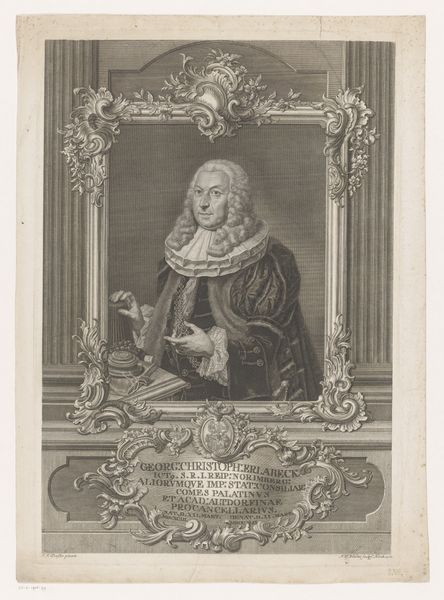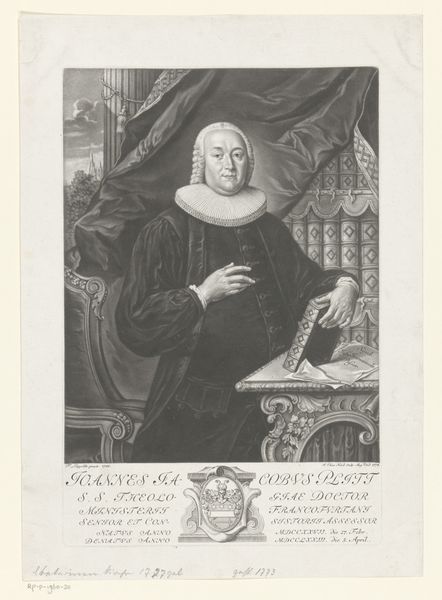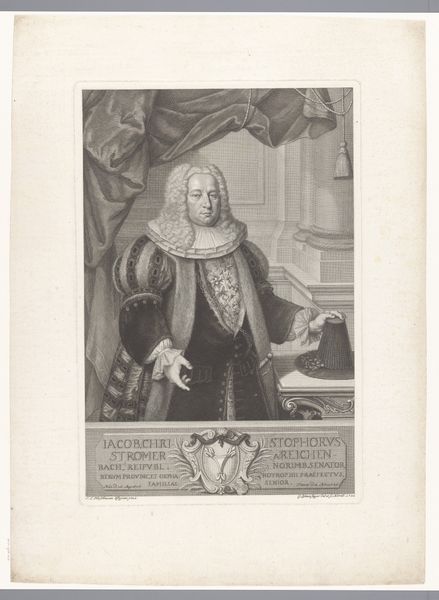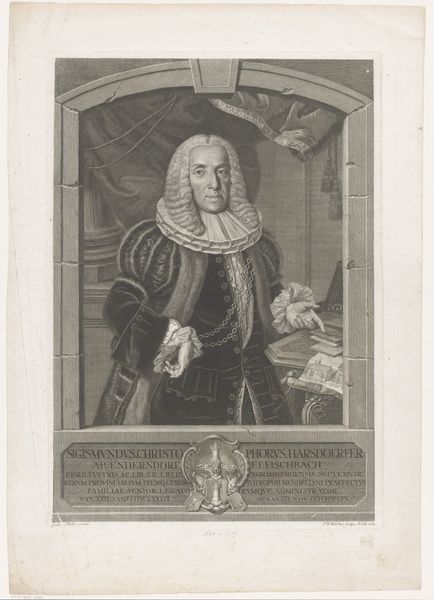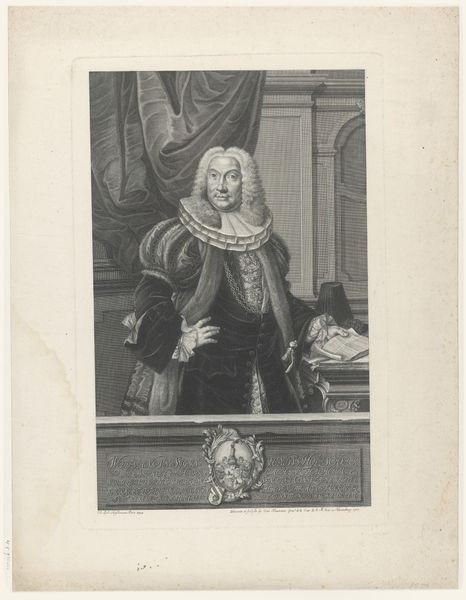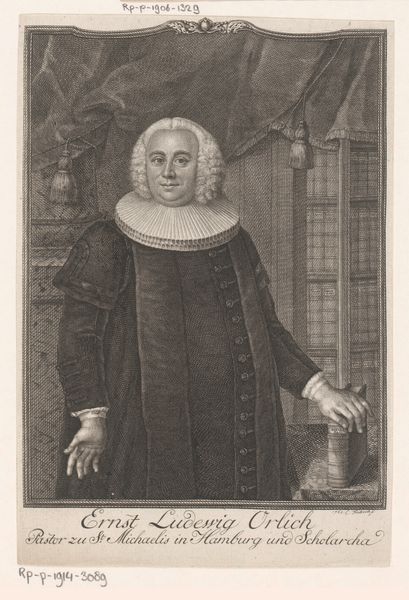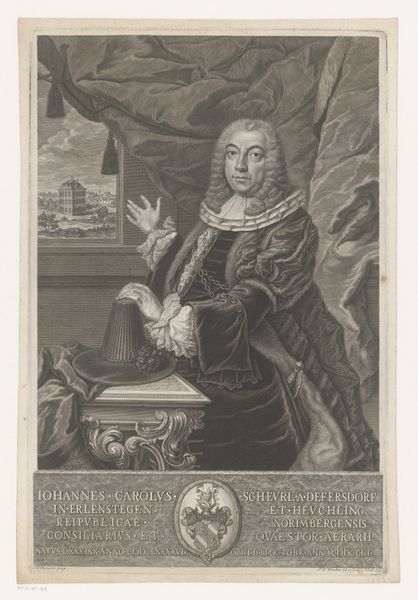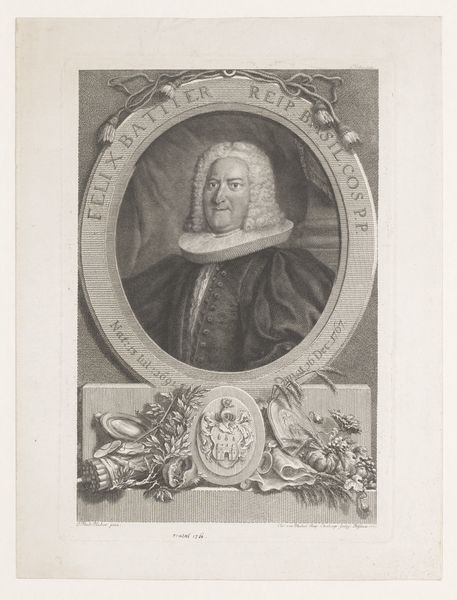
Dimensions: height 476 mm, width 307 mm
Copyright: Rijks Museum: Open Domain
Curator: Welcome. Before us is "Portret van Georg Christian Huls (von Rathsberg)," an engraving from 1766, housed right here at the Rijksmuseum. Editor: My first impression is one of formal austerity. The stark contrasts create an almost severe mood. Is it intended to evoke admiration or unease? Curator: Note how the engraver meticulously renders the textures, from the sitter's velvet coat to the crisp pages of the books, showcasing remarkable control of the medium. The use of hatching and stippling creates a full tonal range despite the monochromatic palette. Editor: I can’t help but think about the social and political structures underpinning such formality. His garments, his setting—all designed to convey power and status during the baroque period. This is a very exclusionary depiction of prestige and social authority. Curator: Indeed, and we see typical elements of Baroque portraiture at play here, the column, the drapery. However, the realistic detail in his features softens the pomp slightly. It hints at an individual beyond the role. Editor: I find it fascinating how he is situated with the open books—foregrounding intellectual and cultural pursuits, a signal about the type of civic participation that was deemed valuable. I think, who was invited into those halls of learning, and who was not. Curator: Look closely, and we see beyond the subject to a window revealing a distant landscape, further setting a scene that invites narrative interpretation. Editor: From a distance, it might be interpreted as an appreciation of knowledge and learning; seen closer, the landscape may reference land ownership and colonial extraction that afforded certain white men access to power, while deliberately excluding others from holding it. Curator: A testament to the layering of information in the art. Viewing technique can enhance, and enrich, context and interpretation. Editor: Art invites these multilayered analyses; acknowledging these disparities enhances, rather than diminishes, its historical relevance and enables discussions of historical and contemporary inequalities.
Comments
No comments
Be the first to comment and join the conversation on the ultimate creative platform.
